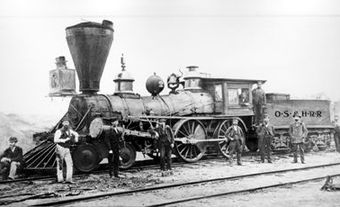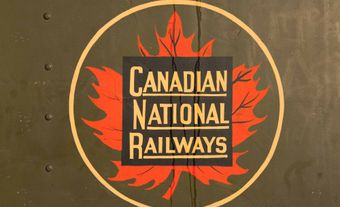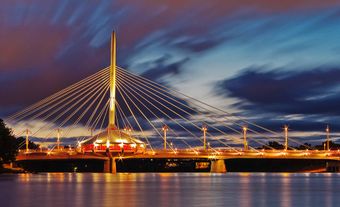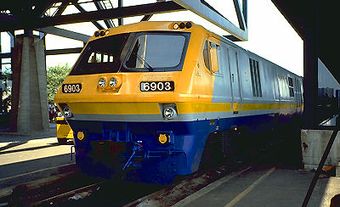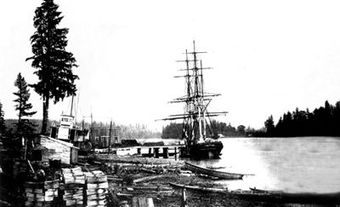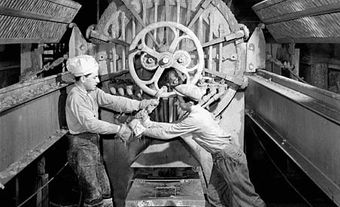The idea of the Hudson Bay Railway, which eventually came to run from Winnipeg to The Pas, and then to Churchill, Manitoba, was conceived by public and private interests in the late 19th century as a means of transporting grain as quickly as possible onto ships for overseas sale. Over a period of almost 50 years, construction efforts ran into various problems — including engineering disputes, storms, a harsh northern climate, fires, labour unrest, and material and labour shortages. From 1910 onwards, the federal government took charge of paying for the engineering and construction work for the railway line, particularly after the creation of Canadian National Railways in 1919. The line was completed in 1929 and opened for full service in 1931. (See also Railway History in Canada.)

Construction of the Hudson Bay Railway (1875–1931)
There were three distinct phases in the planning and construction of the Hudson Bay Railway. Phase one (1875–86) included surveys by Dr. Robert Bell in the late 1870s and the construction of the line’s first 40 miles (64 km) by the Winnipeg and Hudson’s Bay Railway and Steamship Company (a private company) in 1886.
The project was practically abandoned and the first 40 miles were left untouched for more than a decade, and most of the railroad ties rotted. Sir William Mackenzie and Sir Donald Mann of the Canadian Northern Railway contributed to the revival of the route by constructing a branch line from Hudson Bay Junction to The Pas in 1908.
In phase two (1909–15), the Government of Canada was involved in the planning of the line, with the actual work done by independent contractors. During this phase, the partial construction of the line towards Port Nelson, Manitoba, occurred. In 1914, the railway line was built as far as Pikwitonei, Manitoba (Mile 214), and in 1915 to Kettle Rapids, Manitoba.
In phase three (1915–31), the line from Kettle Rapids to the Churchill River was constructed. After the section to Kettle Rapids was completed in 1915, there was a 10-year hiatus when very little was done. When construction recommenced in 1926, the line was extended to Amery in 1927 and then to Churchill in 1929. In the last phase of work, both the federal department of Railways and Canals and Canadian National Railways, the railway company owned by the government, were responsible for completing construction of the line.(See also Railway History in Canada.)

Indigenous Communities
The construction and expansion of the railway, like many other railway projects, had social, economic and cultural impacts on Indigenous communities in Northern Manitoba. ( See also First Nations in Manitoba.) The laying of a railway track is an act of colonialism, as it allowed for more non-Indigenous people to enter and settle traditional territory and for the removal of Indigenous peoples to reserves. On the other hand, the railway also helped to bring supplies to Indigenous communities and was a source of employment. Most local Cree men from the 1930s onwards maintained the railway line. They did so because they knew the region and were good at tracking spring runoff and other conditions affecting the tracks. In the early years of the railway, they earned between 30 or 40 cents an hour. Work with the railway was also one of the only jobs available to these men due to laws that could result in the loss of their Indian Status if they left their local area (see Indian Act). They worked with pickaxes and shovels and what drove them was that the rail line kept them connected to their traditional land as well as with people in the south.

 Share on Facebook
Share on Facebook Share on X
Share on X Share by Email
Share by Email Share on Google Classroom
Share on Google Classroom







